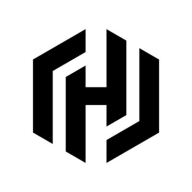

Google Kubernetes Engine and HashiCorp Nomad compete in the container orchestration solutions category, with HashiCorp Nomad generally having the upper hand due to its flexibility and scalability, particularly appealing for diverse deployment environments.
Features: Google Kubernetes Engine provides deep integration with Google Cloud, automatic scaling, and multi-cluster support to efficiently manage workloads. HashiCorp Nomad is versatile, supporting workloads beyond containers, making it robust for mixed environments, and offers flexibility for varied architectures.
Ease of Deployment and Customer Service: Google Kubernetes Engine benefits from streamlined deployment within the Google Cloud ecosystem, though its complexity may pose a steep learning curve. It offers extensive customer support. HashiCorp Nomad, with a simpler deployment model and comprehensive documentation, enables easy integration into existing infrastructures. Its community-driven approach and clear guides are practical for implementation.
Pricing and ROI: Google Kubernetes Engine generally incurs higher setup costs due to its cloud-centric model, delivering significant ROI for projects aligned with Google Cloud. HashiCorp Nomad offers lower initial costs and improved ROI potential for organizations leveraging multi-cloud strategies or on-premise resources. Its cost-effectiveness appeals to those seeking diverse deployment capabilities.
| Product | Market Share (%) |
|---|---|
| Google Kubernetes Engine | 2.1% |
| HashiCorp Nomad | 3.5% |
| Other | 94.4% |


| Company Size | Count |
|---|---|
| Small Business | 20 |
| Midsize Enterprise | 6 |
| Large Enterprise | 15 |
Kubernetes Engine is a managed, production-ready environment for deploying containerized applications. It brings our latest innovations in developer productivity, resource efficiency, automated operations, and open source flexibility to accelerate your time to market.
HashiCorp was founded by Mitchell Hashimoto and Armon Dadgar in 2012 with the goal of revolutionizing datacenter management: application development, delivery, and maintenance.
The datacenter of today is very different than the datacenter of yesterday, and we think the datacenter of tomorrow is just around the corner. We're writing software to take you all the way from yesterday to today, and then safely to tomorrow and beyond.
Physical, virtual, containers. Private cloud, public cloud, hybrid cloud. IaaS, PaaS, SaaS. Windows, Linux, Mac. These are just some of the choices faced when architecting a datacenter of today. And the choice is not one or the other; instead, it is often a combination of many of these.
HashiCorp builds tools to ease these decisions by presenting solutions that span the gaps. Our tools manage both physical machines and virtual machines, Windows, and Linux, SaaS and IaaS, etc. And we're committed to supporting next-generation technologies, as well.
HashiCorp was founded and continues to be run by the primary authors of all our core technologies powering thousands of companies worldwide. We speak at conferences and write books related to application and infrastructure management.
All our foundational technologies are open source and developed openly, and have been since 2010.
The Tao of HashiCorp is the foundation that guides our vision, roadmap, and product design. As you evaluate using or contributing to HashiCorp's products, it may be valuable to understand the motivations and intentions for our work.
We monitor all Container Management reviews to prevent fraudulent reviews and keep review quality high. We do not post reviews by company employees or direct competitors. We validate each review for authenticity via cross-reference with LinkedIn, and personal follow-up with the reviewer when necessary.